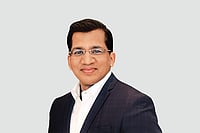Universities are essential because they prepare people for occupational and other societal roles, and personal and societal advancement. Education is necessary for both emotional and societal well-being. These educational institutions, which include public and private universities, are distinguished by highly diverse leadership, not only at the presidential and administrative levels but also among faculty, students, and staff.
At the same time, the governance of these organisations is unique, with two distinct tracks: one overseen by trustees and the other by the faculty. For the latter, who is in charge of courses, graduation requirements, and the awarding of other certifications, defining successful leadership entails looking at things like student enrolments, tuition, graduation rates, student-faculty ratios, faculty productivity and grant support, faculty tenure and promotion, accreditation, and funding. Leadership in such a complex environment is made even more difficult by the need to balance the interests of multiple constituencies, including alumni and external accreditation bodies.
As the rate of change in higher education accelerates, the challenges become more complex; current and future leaders must deal with changing demands from multiple stakeholders, increased regulation, a sceptical public, stiffening competition, new technologies and delivery methods of education, and revenue streams that are drying up. State universities, in particular, have seen significant legislative budget cuts in recent years. Nonetheless, the increased tuition fee implemented to compensate for lost revenue has sparked outrage among parents, students, and state legislators. Even private universities are experiencing high tuition fee fatigue from parents who are often quite wealthy. To make matters worse, traditional universities compete with for-profit universities, and they are frequently outmatched. As a result, global higher education, which is increasing and seen as critical to economic success, is under tremendous pressure to change.
Universities and other institutions are expected to create knowledge, improve equity, respond to student needs, and do so more efficiently today. At the same time, they must compete with the private sector and across the globe for students, research funds, and academic staff. Direct management by governments is no longer appropriate in this more complex environment. Instead, as outlined in this paper, educational leadership must play a significant role in developing a vision, communicating policy, and implementing strategy across the higher education system.
Leadership Difficulties
The challenges that higher education leaders face are arguably among the most difficult in the world. Presidents, Vice Chancellors, Deans, and other university leaders must consider national challenges, local and institutional goals and priorities, and a diverse and often seemingly irreconcilable array of stakeholder expectations and demands and wishes of bright and independent colleagues. They must do so with limited resources and frequently with few incentives to encourage new initiatives or significant change.
Another significant challenge is that those who move into leadership and governance roles from faculty or professional positions often have little formalised preparation for those roles as part of their education. That is, while education encourages independent thinking and problem solving and places a high value on providing answers and effectively articulating and defending a point of view, it does not provide the additional skills required by an organisational leader, namely, skills in creating consensus on priority, a facility for consultation in thought and action, and the ability to defer or sublimate one’s point of view. Facilitating and coordinating the contributions of others is critical in such roles, as is becoming a student of organisational politics and higher education economics. Thus, successful leaders must learn to prioritise the personal and professional recognition of others’ accomplishments, as well as the achievements of the institution, over their own.
Today’s educational leaders must create an entirely new leadership model based on lessons learned from the technology industry. According to Amazon founder Jeff Bezos, today’s leaders must “think of themselves not as designers but as gardeners”. He is referring to corporate leadership, but his advice equally applies to higher education, which has consistently produced visionary leaders. Everyone considered for a deanship or higher position has been asked to describe their vision. Strong-willed individuals have been admired and rewarded. The norm is decisive, gut-level decision-making.
Despite this, some institutions are planning how to proceed. Regrettably, too many people are paralysed by fear or immobilised by tradition, unable to act decisively. Like the proverbial ostrich with its head in the sand, they refuse to see reality and hope that the danger will pass quickly. Universities are “up for grabs,” which could be advantageous. No strong central leader will change the university’s landscape, so we cannot and should not wait for some superman/superwoman to lead the cause. Instead of a warrior ethos, a leadership style is based on gardening. Higher education is the new model adopted by corporate America, as evidenced by the rising tech titans.
University Administration
It has been challenging to describe university leadership beyond the common heuristics based on daily practice. We still know very little about leadership in higher education institutions and how university leaders create and sustain the conditions and processes that help these institutions improve. Nonetheless, several recent studies have found evidence that the understanding of leadership in academic institutions, at least among scholars, is shifting from a rational to a cultural and symbolic perspective.
Without a doubt, connecting with others in the organisation and gaining cooperation in working collaboratively towards the organisation’s goals and objectives is the key to being an effective leader. Such leadership can have a significant impact on institutional effectiveness. However, most studies on leadership and management in higher education show that it is currently dispersed rather than distributed evenly across the institution.
Several studies have attempted to explain why today’s dynamic educational leader is accountable for more than just meeting expected standards. As educational leaders, the president, vice-chancellors, and dean are responsible for ensuring that effective teaching and learning occur within a learning community. However, for this to happen, the dynamic educational leader must have the skills and knowledge that support the evolution and growth of a higher education community. To be active, educational leaders must be able to assist and implement change that improves the institution’s effectiveness and has long-term benefits for students. As a result, dynamic educational leaders must ensure a structure that allows for effective organisational change, including the involvement of students, faculty, staff, and parents within that community.

There is no easy way to achieve excellence in higher education leadership. One of the essential leadership tenets is that leaders are most effective when they are personally and visibly engaged in their work in such a way that their words and actions demonstrate their commitment to the organisation’s values and guiding principles.
Thus, leaders can reaffirm and reinforce the importance of listening to and understanding the perspectives of those served by the organisation, engaging and valuing colleagues at all levels, promoting an open and constructive exchange of viewpoints, and encouraging collaborative leadership and accountability throughout the organisation through their actions. Personal involvement, communication, and consensus building, which are important in all organisations, are significant in higher education due to the variety of challenges to be addressed, shared governance traditions, and the limited number of incentives and rewards available to most leaders to encourage change.
Leadership Styles in Higher Education
Organisations have traditionally been viewed as learning systems, with success dependent on leaders’ ability to become direction givers and the organisation’s capacity for continuous learning. Different people use different leadership styles, manners, and approaches to providing direction, implementing plans, and motivating others. Other leadership styles are commonly defined by adjectives such as authoritarian or autocratic, participative or democratic, delegative or free reign, and, perhaps most importantly, transformational versus transactional leadership. Transformational leaders can learn across multiple disciplines. They are, however, typically at the pinnacle of their functional speciality and thus have a limited perspective for seeing the need for change and the potential consequences of continuing with the same practices. Being in such a conflicting role makes transformational leadership challenging to implement.
Although representatives in any capacity with the ability to influence change exhibit quality leadership traits in all functional activities, quality leadership is demonstrated when effective results are recognised and realised. Individual characteristics that define such effective leadership include self-awareness, authenticity/integrity, commitment, empathy/understanding of others, and competence. Group traits include collaboration, shared purpose, disagreement with respect, division of labour, and a learning environment.
Transformational leadership
Transformational leadership is the current focus of organisational leadership concepts based on vision statements that provide an organisation’s directional path. The vision statement should accompany a mission statement that energises and inspires all members to pursue attainable organisational goals. Transformational leaders find clear and workable ways to overcome obstacles, are concerned about the quality of their organisation’s services, and inspire other members to do the same. As a result, transformational leaders promote growth and change, and transformational leadership is value-driven.
As a result, the leader establishes high expectations and goals for followers, engaging them through inspiration, exemplary practices, collaboration, and trust. Thus, transformational leadership strives to respond quickly to change and bring out the best in people. In times of environmental turmoil, when strategic changes are required to deal with threats and opportunities, change-oriented leadership is critical to the development and survival of organisations. Its power stems from shared principles, norms, and values. Leaders who encourage and support transformation and share their passion are open to learning from others and balancing the need for achievement with growth.
Such transformational leadership may be required in higher education to adapt to the constantly changing external and internal environments. Introducing entrepreneurship into the public sector, an attempt by higher education institutions to adapt to economic and organisational shifts in their environment, is a critical factor in this change. This point is emphasised by the decline in support from traditional funding sources for higher education over the last two decades. As a result, significant short-term goals have been established, and the day-to-day emphasis has shifted from student learning to an environment of institutional business development.
Transactional leadership
Transactional leadership is defined primarily by contingent rewards, which are exchanges between leaders and subordinates in which effort by assistants is exchanged for specific prizes (i.e., salary, bonuses, or other incentives), and management by exception, which is an oversight that involves corrective criticism, negative feedback, and/or negative reinforcement. The former is exemplified by a job description that evolves into an agreement between the leader and subordinates. It specifies the job to be performed and the benefits the employee will receive for performing those duties. By exception, the most common form of management is job performance evaluation, followed by proposals for corrective measures, the prevention of something undesirable, or the desire for different actions in the performance of the job.
Transactional leaders maintain the status quo by controlling their interests and need for output. Transactional leaders demonstrate passivity when employees are not recognised for their organisational contributions. Instead, they become the focal point of attention when a problem arises when they practise management by exception in their interactions with subordinates. As a result, transactional leaders set clear goals and objectives with a short time horizon and have little interest in changing the environment or culture except when or where problems arise. Subordinates usually share a common understanding of goals and expectations because this type of leader clearly and specifically outlines what is required and expected of them.
As a result, the environment is highly structured, emphasising managing authority. Due to the assumption that people are primarily motivated by simple rewards for specific job performance, such a structure creates a culture of non-creativity and a lack of creative expansion in the organisation. In many cases, the result is a lack of improvement in job satisfaction, which stems from a significant flaw in this approach—it fails to consider employees’ desire for self-actualisation.
Transactional leaders derive authority from established power dynamics, defining their management style as status quo leadership. On the other hand, transformational leadership is a change agent for the leaders, their subordinates, and the organisation of which they are a part. Similarly, whereas transactional leaders must be able to recognise and respond to changing needs of associates (because they provide assistants with something they want in exchange for something the leaders seek), effective transactional leadership draws from profoundly personal value systems.
Transformational leaders, in particular, bring followers together to pursue collective goals by expressing and disseminating their standards. As a result, while transactional leadership can undoubtedly result in positive outcomes within an organisation, transformational leadership aims to promote performance that exceeds expectations by leveraging charisma, consideration, and stimulation.
Leadership strategies for success in higher education
In higher education, the distinction between transactional and transformational leadership practices and concepts may not be as transparent as previously thought. To ensure that an institution of higher education succeeds in its purpose of learning, the situation and environment in public funding to higher education will necessitate the critical application of transactional and transformational leadership practises and concepts. The knowledge, leadership skills, and technical expertise of a higher education institution’s leaders are required to ensure the successful completion of a transformation effort.
Leadership is the most difficult challenge in higher education today; navigating the complex educational environment necessitates innovative, flexible, and bold leadership qualities. Nonetheless, “leadership” has become one of those oft-quoted terms whose true meaning has been obscured by its use to identify, blame, solve, and even create problems in any business setting. As we grapple with changing student demographics, new regulatory requirements, globalisation, and technology that challenge the core philosophy of higher education, the term has become even more ambiguous in higher education. As a result, higher education must address the following leadership challenges and qualities to have a successful future:

Because of the dynamic environment, many higher education institutions’ vision, mission, and core values are fluid and constantly challenged. As a result, today’s leaders must be adept at motivating and effectively communicating change to a wide range of audiences. To do so successfully, leaders must maintain an authentic and consistent relationship with stakeholders, with whom they must maintain an ongoing, collaborative, and participatory dialogue. Even though it may appear to be old news, this mandate must be applied in a new context. Although universities are very traditional, the world and its values constantly change. As a result, how a leader manages the tension between tradition and change is critical.
Many structures in higher education have emerged to standardise conceptualisation, governance, measurement, and assessment. Today’s leaders must thus prioritise creativity, which, along with innovation, is the bedrock of higher education, entrepreneurship, and economic vitality. Maintaining such a focus entails confronting tradition while retaining the synergistic links between knowledge, experience, creativity, and careers.
Education for the sake of education is becoming obsolete; students want a job, and higher education must provide it. As a result, today’s leaders must be willing to question long-held beliefs about higher education and consider an ideological shift in its purpose and value proposition. Leaders must also consider the interdisciplinary nature of learning and design integrated, authentic learning experiences with a wide range of skills and scope. A higher education that gives people a well-rounded mind does not preclude them from being trained for a successful career. The two are not incompatible.
Because federal regulations and accreditation have increased the legal complexity of higher education, today’s educational leaders must be well-versed in regulatory rules, legal interpretations, and compliance.

Because the modern world has automated many interactions and functions uniquely human, the essence of leadership is the relationship rather than the leader. As a result, leaders must cultivate relationships in various ways and methods. Most notably, leaders should use various tools to articulate and connect rather than relying solely on asynchronous instruments.
Collaboration is a frequently cited instructional ideal, but its implementation in higher education organisations may fall short of the mark. To foster creativity, today’s leaders must adopt and adapt a decision-making process that is more open, less linear, and collaborative. Design and architectural thinking models can help with this decision-making process.
Because higher education is increasingly reliant on new and emerging technologies, today’s leaders must be fluent in them, mainly as they apply to learn. Simultaneously, they must ensure that such technologies do not become a source of distraction from learning.
Given the increased need for financial support by higher education institutions, universities should consider restructuring their operations to mimic the structure of successful businesses. Universities can receive financial support from policymakers and legislators by following a business format and partnering with companies. Because business interests, such as for-profit growth, are inextricably linked to higher education, collaboration with businesses is required to yield higher earnings. Nonetheless, to foster successful relationships, higher education must shift its focus to a profitable business.
Finally, higher education leaders must possess specific skills and knowledge to provide dynamic support and enhancement successfully. These abilities include the ability to (a) establish a shared vision and core values; (b) create a sense of community; (c) create a sense of ownership; (d) provide insight and identify strengths and areas for growth; (e) empower, enable, and build capacity; and (f) implement strategies that share knowledge with others to ensure system evolution. The knowledge base of an educational leader must include (a) an understanding of good pedagogy; (b) recognition of innovations that positively impact teaching, learning, and scholarship; (c) familiarity with local and global influences; (d) the ability to identify elements that support effective and efficient leadership; and (e) comprehension of the strategies that build leadership capacity. These findings from the existing literature imply practical advice that university leaders at all levels could immediately address the internal consequences of cynicism and demoralisation. This could result in developing critical prerequisites for becoming effective and successful educational leaders. Such leaders should, in particular, understand the environment, the university, and themselves, as well as how to lead while celebrating diversity and enhancing the student experience, as well as the key strategic challenges to higher education, university governance, institutional financial health, the university as an ecology of learning, how to manage reputation, and how to communicate in a crisis. All of these factors must be present for successful leadership performance.
***
Methodology
A cademic and research excellence, industry interface and placements, infrastructure and facilities, governance and admissions, and diversity and outreach are the five criteria used to evaluate universities. These five broad parameters are then subdivided into several sub-parameters/indicators, each of which contributes to an overall weightage. The criteria scores are then normalised, with scores for each measure weighted to yield a final overall score of 1000 (see above).
The ranking data is gathered from our surveys and then vetted using evidence and reliable third-party sources; in a few cases, we rely on trusted data sources like AISHE, NAAC, NIRF, and so on. These rankings are based on data from 2016 to 2021. Despite this, in order to account for the Covid-19 disruption to higher education, we allowed institutions to submit data in a variety of formats, going beyond the format we had designed to ensure greater participation and ease of data submission. Despite the fact that the methodology is the result of years of research, we are constantly refining it based on user feedback, discussions with academic leaders and higher education experts, literature reviews, trends in our own data, the availability of new data, and interactions with vice-chancellors, deans, researchers, academicians, and prominent educationists.
(This appeared in the print edition as "Leadership For Excellence")


























